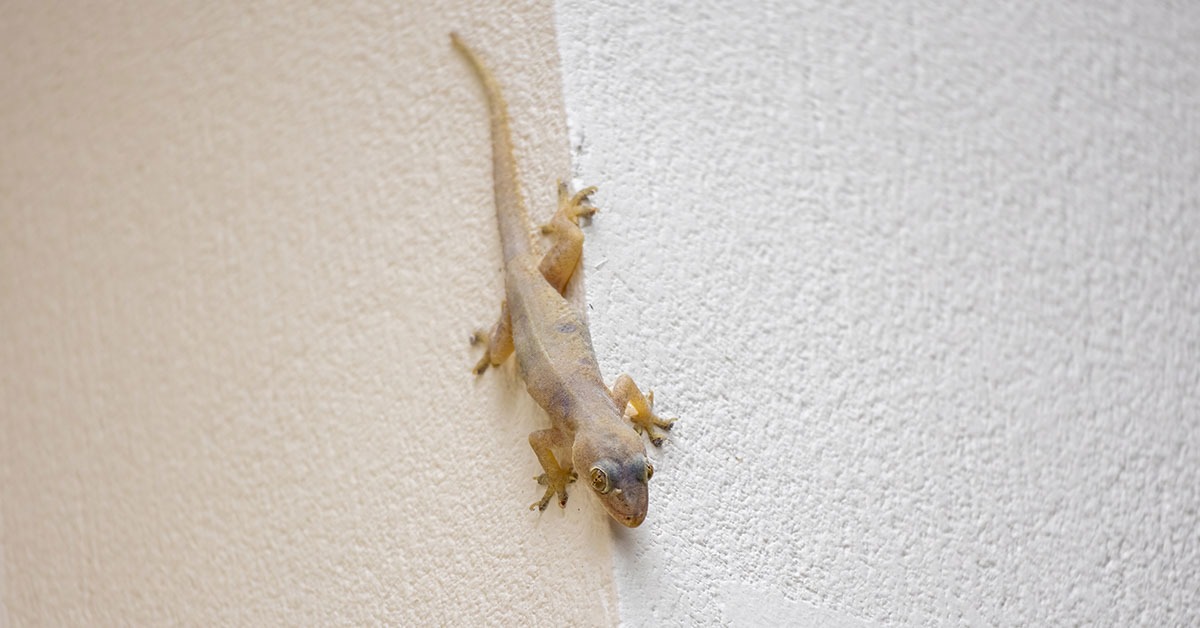The Scientific Perspective: Why Lizards Enter Homes
Lizards are part of the reptilian order Squamata, and over 6,000 species exist globally. Most are harmless, insect-eating creatures that play an important role in maintaining ecological balance.
Lizards commonly enter homes for three primary reasons:
- Food availability: Lizards feed on insects such as flies, mosquitoes, ants, and spiders, which are often found indoors.
- Warmth: Homes offer shelter and warmth, especially appealing during colder months.
- Access points: Open windows, door gaps, and small cracks provide easy entry for these small creatures.
According to the National Wildlife Federation, lizards are beneficial for pest control and help maintain a natural balance in both outdoor and indoor spaces.
Source: National Wildlife Federation
These reptiles pose no significant health risk to humans and rarely interfere with daily life. Most household lizards are non-venomous and will leave when food sources disappear or environmental conditions change.

Lizards as Natural Pest Controllers
Lizards contribute positively to home environments by preying on common household pests. They help reduce the number of mosquitoes, flies, cockroaches, moths, and other small insects that can carry bacteria or cause discomfort.
A study published in Ecological Entomology supports the role of insectivorous reptiles, including lizards, in keeping indoor and outdoor insect populations under control.
Source: Wiley Online Library
Because of this role, some homeowners choose to leave lizards undisturbed, recognizing their ecological benefit and non-invasive nature.

Symbolic Interpretations Across Cultures
Beyond their biological purpose, lizards are often seen as symbolic figures in folklore, mythology, and cultural traditions around the world. While these interpretations are not scientifically verifiable, they are part of many belief systems and offer a broader understanding of how people relate to nature.
Symbol of Adaptability and Transformation
In many cultures, lizards are associated with adaptability and survival. This symbolism likely stems from their fast movements, ability to thrive in diverse environments, and capacity to remain unseen when necessary.
Aboriginal Australian culture, for example, features lizards in rock art and storytelling traditions. Lizards often represent transformation, regeneration, and connection to the Earth.
Source: Australian Museum
The concept of change and adaptation is also common in modern spiritual interpretations. Seeing a lizard might be viewed as a reminder to stay flexible and open to new experiences.
Tail Shedding and the Idea of Letting Go
One of the most well-known behaviors of lizards is their ability to shed their tail when threatened. This process, called autotomy, allows them to escape predators and survive danger.
From a scientific perspective, this is an effective evolutionary strategy. The Journal of Experimental Biology describes autotomy as a defense mechanism that can help lizards regenerate part of their body after injury.
Source: Journal of Experimental Biology
Culturally and spiritually, this has been interpreted as a metaphor for releasing what no longer serves us—such as unhealthy habits, limiting beliefs, or emotional burdens.
Interpreting the Lizard’s Presence
Some people view animal sightings as messages or signs related to life circumstances. While not grounded in science, these interpretations are often used for self-reflection.
In symbolic frameworks, the lizard’s presence may suggest:
- A need for personal transformation
- A period of transition or change
- Letting go of the past to make space for growth
It is important to recognize that such meanings are subjective and vary by individual beliefs and cultural backgrounds. These insights are not based on empirical research and should be treated as personal interpretations rather than factual claims.

What to Do When a Lizard Enters Your Home
If a lizard finds its way into your home, there is usually no need for alarm. Here are several humane and effective steps you can take:
- Leave it undisturbed: Lizards do not seek to harm humans and will often leave on their own once they have eaten the insects they are after.
- Seal entry points: Close or seal openings around windows, doors, and vents to prevent further entry.
- Avoid pesticides: Chemical sprays can harm lizards and disrupt your home’s ecosystem. Opt for natural solutions, like keeping food covered and ensuring your home is clean.
- Gently remove: If necessary, carefully guide the lizard outside using a container or sheet of paper, avoiding any harm to the animal.
The Humane Society advises against using lethal methods to remove wildlife indoors, encouraging safe relocation practices instead.
Source: Humane Society

Respecting Cultural Beliefs
In various cultures, lizards are regarded with respect or caution. For example:
- In India, lizards are associated with omens and interpreted through traditional astrology.
- In some parts of Africa, lizards are seen as spiritual messengers or linked to ancestral spirits.
- In Hawaiian tradition, certain species of lizards are believed to be guardian spirits of land and water.
Even if one does not subscribe to these beliefs, understanding them fosters cultural sensitivity and a respectful relationship with local traditions and wildlife.

Summary: What a Lizard in Your Home Might Represent
From a scientific point of view, lizards are valuable natural allies that help control household pests and support biodiversity. Their presence is typically harmless and even beneficial.
From a cultural or spiritual perspective, lizards may symbolize:
- Adaptability and survival
- Letting go of the past
- Resilience in times of change
Whether you view lizards as helpful creatures, symbolic figures, or simply part of the natural environment, their appearance invites curiosity and reflection.
The next time you notice a lizard inside or around your home, consider both its ecological function and its place in cultural stories across the world. Most importantly, remember that coexistence with nature—especially its smallest creatures—can lead to greater balance in your living space.

References
- National Wildlife Federation – Lizards
- Australian Museum – Aboriginal Rock Art and Animals
- Journal of Experimental Biology – Autotomy in Lizards
- Wiley Online Library – Ecological Entomology
- Humane Society – Humane Wildlife Solutions
